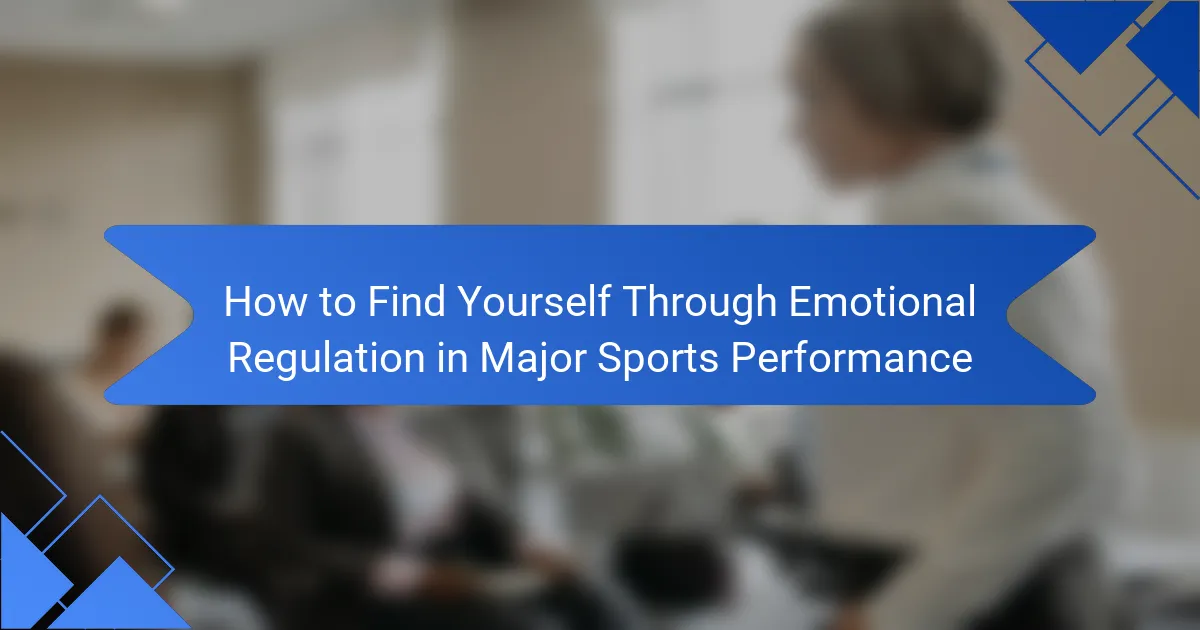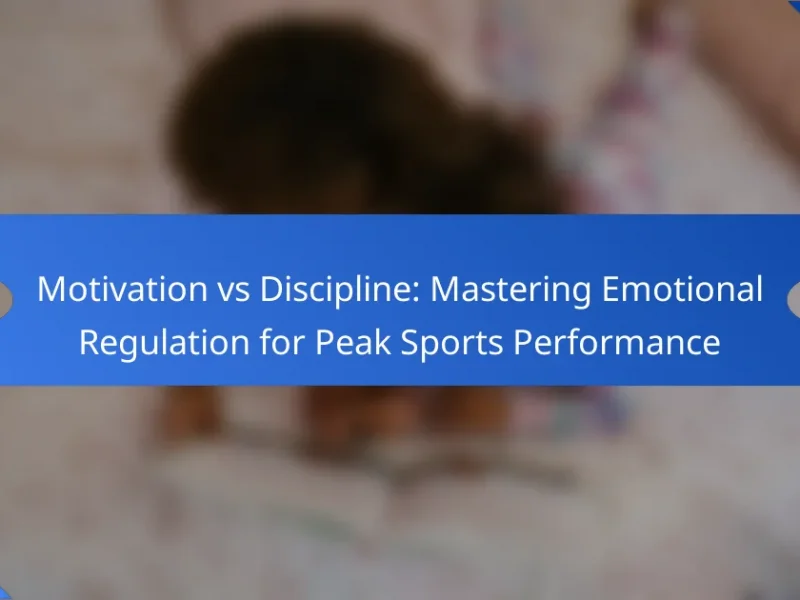Emotional regulation enhances sports performance by improving focus, resilience, and decision-making. This article explores techniques like mindfulness and cognitive restructuring, unique strategies employed by top athletes, and emerging methods such as biofeedback and narrative therapy. Understanding and applying these emotional regulation systems can lead to better outcomes in high-pressure sports environments.

How can emotional regulation enhance sports performance?
Emotional regulation significantly enhances sports performance by improving focus, resilience, and decision-making. Athletes who manage their emotions effectively can maintain composure under pressure, leading to better outcomes during competitions. Research indicates that emotional regulation techniques, such as mindfulness and cognitive restructuring, can reduce anxiety and increase confidence. This results in a unique advantage, as athletes who master emotional control often outperform their peers. By fostering a positive mindset, emotional regulation not only influences individual performance but also enhances team dynamics, creating a more cohesive and motivated group.
What are the key emotional regulation systems in major sports?
Key emotional regulation systems in major sports include cognitive restructuring, mindfulness training, and emotional awareness. These systems enhance athletes’ performance by improving focus, resilience, and stress management. Cognitive restructuring helps athletes reframe negative thoughts, while mindfulness training promotes present-moment awareness. Emotional awareness enables athletes to identify and process their feelings effectively. Together, these systems foster optimal performance and personal growth in sports contexts.
How do athletes use emotional regulation to find their identity?
Athletes use emotional regulation to shape their identity by managing their thoughts and feelings effectively. This skill enhances performance and fosters resilience. Through techniques like mindfulness and cognitive restructuring, athletes can navigate pressure and setbacks, ultimately aligning their emotional state with their personal and professional goals. As a result, they cultivate a strong sense of self and purpose in their sport. Emotional regulation not only improves mental health but also influences how athletes perceive their roles and identities within their teams and competitions.
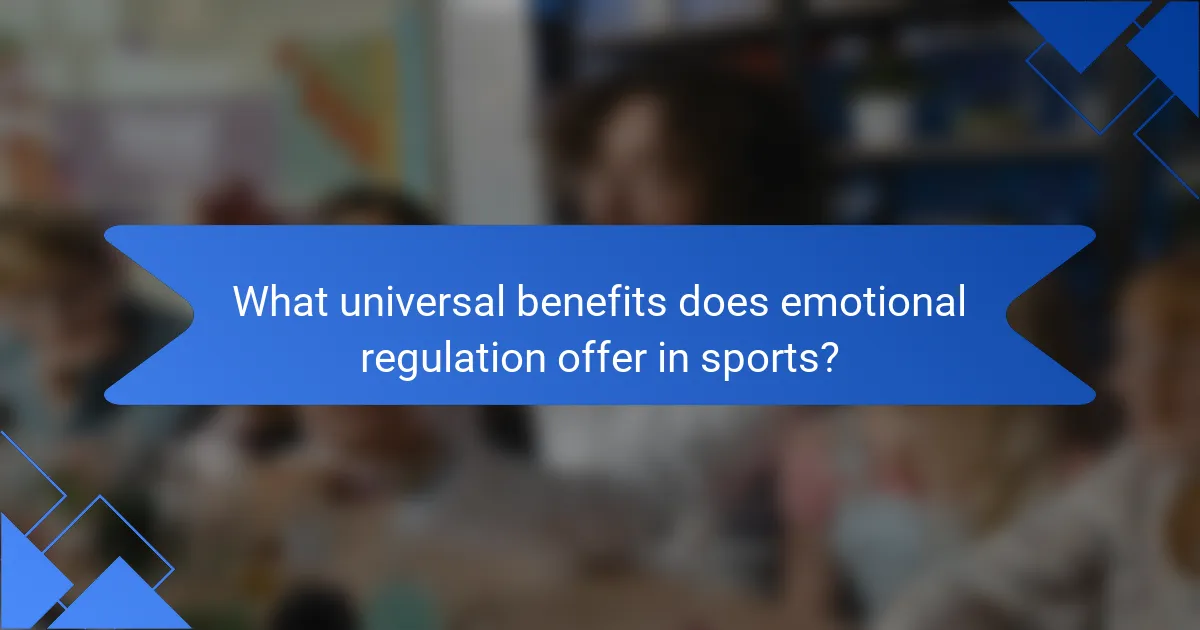
What universal benefits does emotional regulation offer in sports?
Emotional regulation in sports enhances performance by improving focus, resilience, and team dynamics. Athletes who master emotional regulation experience reduced anxiety, leading to better decision-making during competition. This skill fosters mental clarity, allowing athletes to maintain composure under pressure. Furthermore, emotional regulation promotes positive relationships with teammates, enhancing collaboration and trust. Ultimately, these benefits contribute to a more successful and fulfilling sports experience.
How does emotional regulation improve focus and concentration?
Emotional regulation enhances focus and concentration by allowing athletes to manage stress and anxiety. This control leads to improved decision-making and performance under pressure. Techniques like mindfulness and cognitive restructuring help maintain optimal arousal levels. As a result, athletes can sustain attention and execute skills effectively, ultimately boosting their overall sports performance.
What role does emotional regulation play in stress management?
Emotional regulation is crucial for effective stress management in sports performance. It helps athletes maintain focus, enhance resilience, and optimize their mental state during competitions. By managing emotions, athletes can reduce anxiety and improve decision-making, leading to better performance outcomes. Techniques such as mindfulness and cognitive restructuring serve as unique attributes that can empower athletes to harness emotional regulation effectively. As a result, athletes who master emotional regulation often experience improved consistency and overall success in their sport.
How can emotional regulation foster resilience in athletes?
Emotional regulation significantly enhances resilience in athletes by enabling them to manage stress and recover from setbacks. This skill allows athletes to maintain focus and motivation during challenging situations. By effectively regulating emotions, athletes can improve performance consistency and decision-making under pressure. Research indicates that athletes with strong emotional regulation skills demonstrate greater perseverance and adaptability, crucial traits for long-term success in sports.
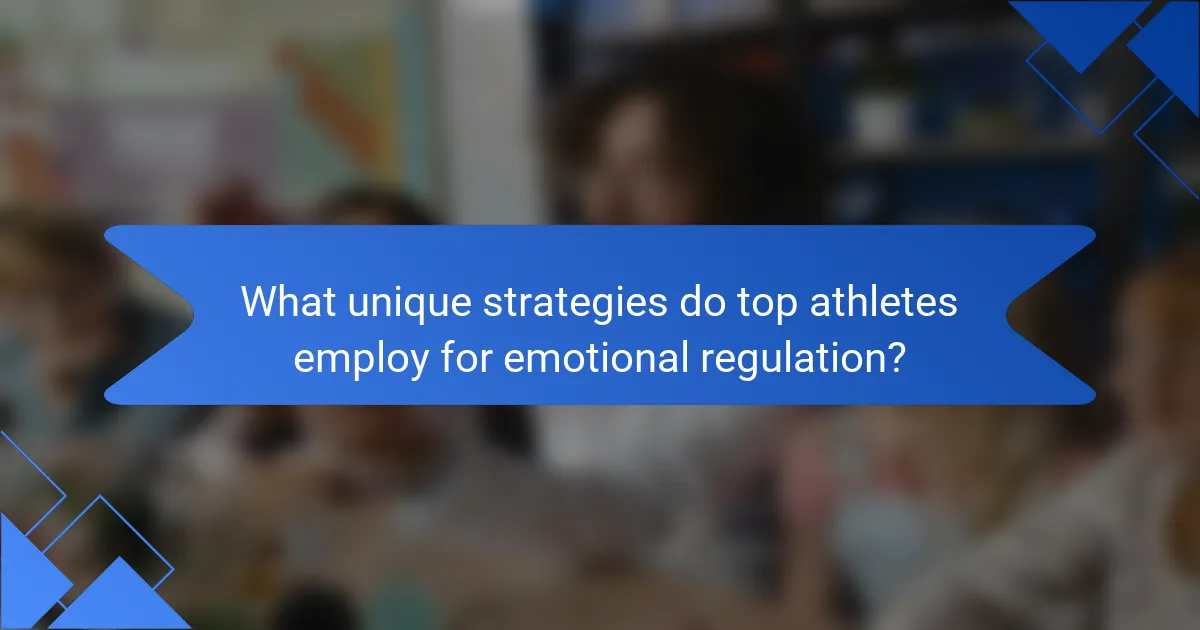
What unique strategies do top athletes employ for emotional regulation?
Top athletes employ unique strategies for emotional regulation, such as mindfulness, visualization, and routine development. Mindfulness helps them stay present, reducing anxiety and enhancing focus. Visualization allows athletes to mentally rehearse performances, improving confidence and reducing stress. Developing consistent routines fosters a sense of control, enabling better emotional management under pressure. These methods contribute to peak performance and resilience in high-stakes situations.
How do elite athletes incorporate visualization techniques?
Elite athletes use visualization techniques to enhance focus and performance. They mentally rehearse skills and strategies, creating vivid imagery of successful execution. This practice boosts confidence and reduces anxiety, allowing athletes to regulate emotions effectively. Research shows that consistent visualization can improve physical outcomes by aligning mental and physical states. Athletes often incorporate visualization into their training routines, using it as a tool to prepare for competitions and manage stress.
What specific breathing exercises are effective for emotional control?
Diaphragmatic breathing, box breathing, and 4-7-8 breathing are effective exercises for emotional control. Diaphragmatic breathing enhances oxygen flow, reducing anxiety. Box breathing promotes focus and calmness through structured inhalation and exhalation. The 4-7-8 technique aids in relaxation by extending the exhalation phase, helping to regulate emotions during high-pressure sports performance.

What rare emotional regulation techniques are emerging in sports?
Emerging rare emotional regulation techniques in sports focus on mindfulness integration, biofeedback training, and narrative therapy. These methods enhance athletes’ self-awareness and emotional resilience, leading to improved performance. Mindfulness practices help athletes stay present, reducing anxiety. Biofeedback uses technology to monitor physiological responses, enabling athletes to regulate emotions effectively. Narrative therapy encourages athletes to reshape their personal stories, fostering a positive mindset. These innovative techniques are gaining traction for their unique approaches to emotional regulation in high-pressure environments.
How is biofeedback being utilized for emotional regulation?
Biofeedback is utilized for emotional regulation by providing real-time data on physiological responses. This method allows athletes to gain awareness of their emotional states and learn to control them effectively. For instance, biofeedback can help in managing stress and anxiety, which are common in major sports performance. By training the body to respond positively to stressors, athletes enhance their focus and performance. Techniques such as heart rate variability training and muscle tension monitoring are commonly employed. As a result, athletes develop better emotional resilience, leading to improved outcomes in competitive settings.
What innovative practices are being adopted by sports psychologists?
Sports psychologists are adopting innovative practices such as mindfulness training and biofeedback to enhance emotional regulation in athletes. These methods help athletes manage stress and improve focus during major sports performance. Mindfulness teaches athletes to stay present, reducing anxiety and enhancing concentration. Biofeedback provides real-time data on physiological responses, enabling athletes to recognize and control their emotional states. As a result, these practices foster resilience and improve overall performance.
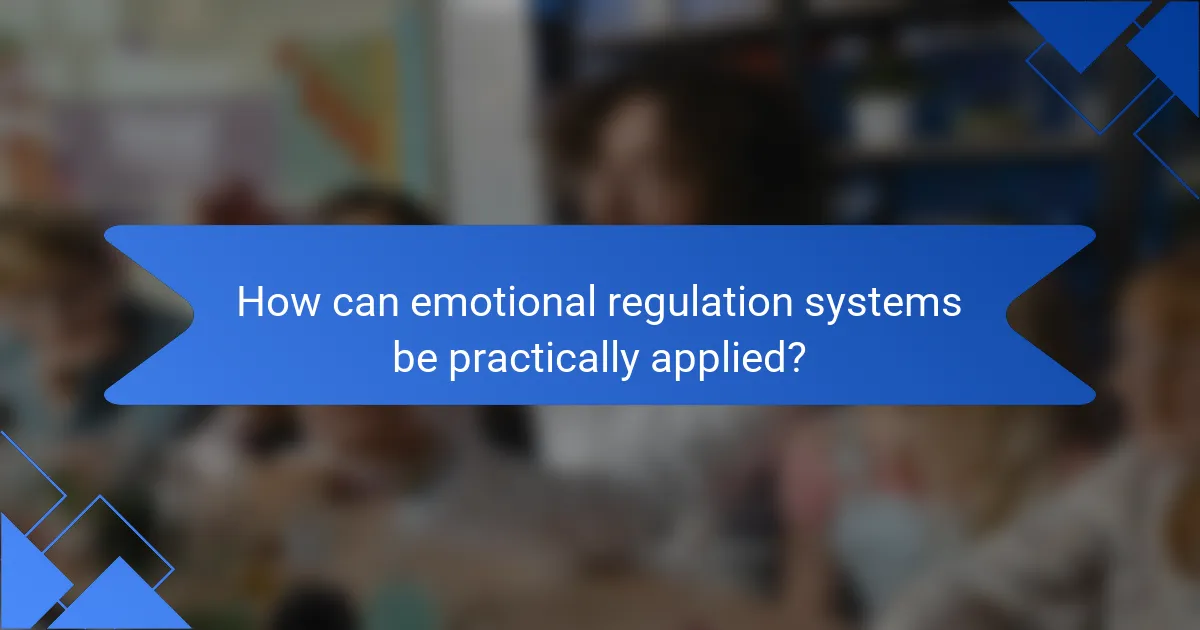
How can emotional regulation systems be practically applied?
Emotional regulation systems can be practically applied in sports performance by enhancing athletes’ focus and resilience. Techniques such as mindfulness, cognitive restructuring, and biofeedback help athletes manage stress and maintain optimal performance levels. For instance, mindfulness training allows athletes to stay present, reducing anxiety during competitions. Cognitive restructuring helps in reframing negative thoughts into positive affirmations, boosting confidence. Biofeedback provides real-time data on physiological responses, enabling athletes to recognize and adjust their emotional states. These practices lead to improved emotional control, which is crucial for peak performance in major sports.
What are the best practices for developing emotional regulation skills?
To develop emotional regulation skills, athletes should practice mindfulness, establish routines, and utilize cognitive restructuring. Mindfulness enhances awareness of emotions, while routines create stability. Cognitive restructuring helps reframe negative thoughts. These practices collectively improve performance under pressure.
What common mistakes do athletes make in emotional regulation?
Athletes often struggle with emotional regulation due to common mistakes. These include failing to recognize emotional triggers, neglecting mental preparation, overemphasizing outcomes, and not seeking support. Recognizing these pitfalls can enhance performance and foster resilience.
How can coaches support athletes in emotional regulation?
Coaches can significantly enhance athletes’ emotional regulation by providing consistent support and strategies. They can teach techniques such as mindfulness, breathing exercises, and visualization to help athletes manage stress and anxiety. Regular check-ins and open communication foster a trusting environment, allowing athletes to express their feelings. Additionally, coaches can model emotional regulation by demonstrating resilience and composure during challenges, reinforcing the importance of emotional skills in performance.
What resources are available for improving emotional regulation in sports?
To improve emotional regulation in sports, athletes can access various resources. These include mental health professionals, workshops, online courses, and self-help books tailored to sports psychology. Engaging with a sports psychologist can provide personalized strategies for managing emotions during competition. Workshops often focus on mindfulness techniques, which enhance self-awareness and emotional control. Online courses can offer flexible learning about emotional regulation principles. Self-help books provide valuable insights and practical exercises for athletes seeking to enhance their mental resilience.
